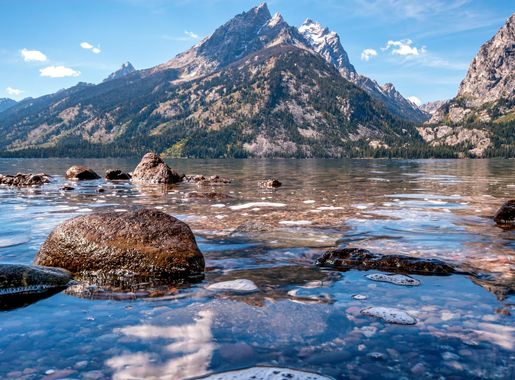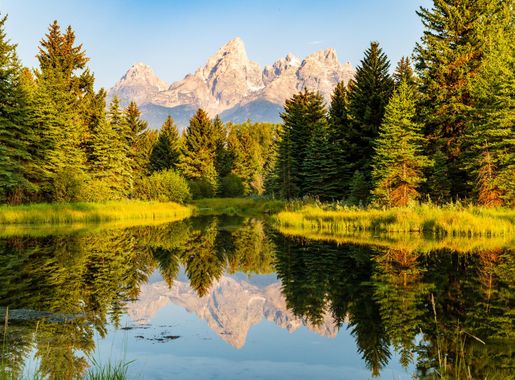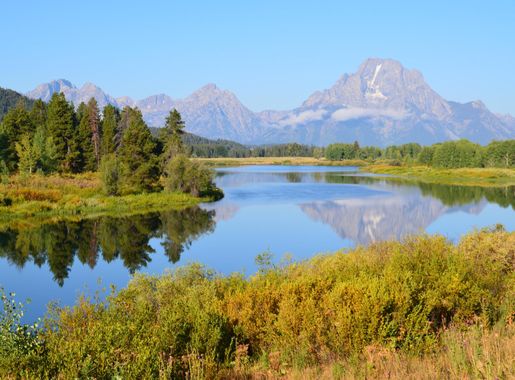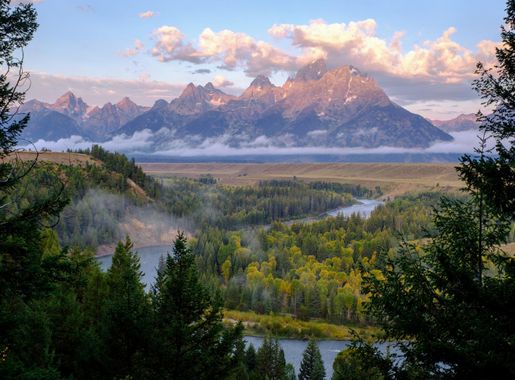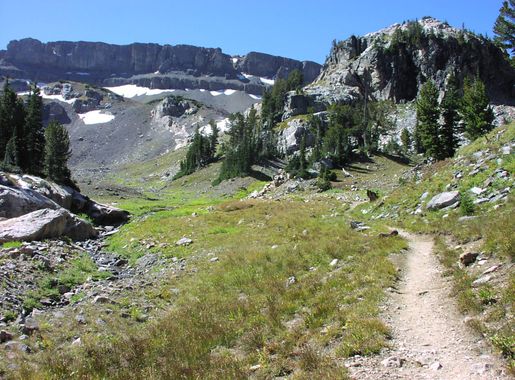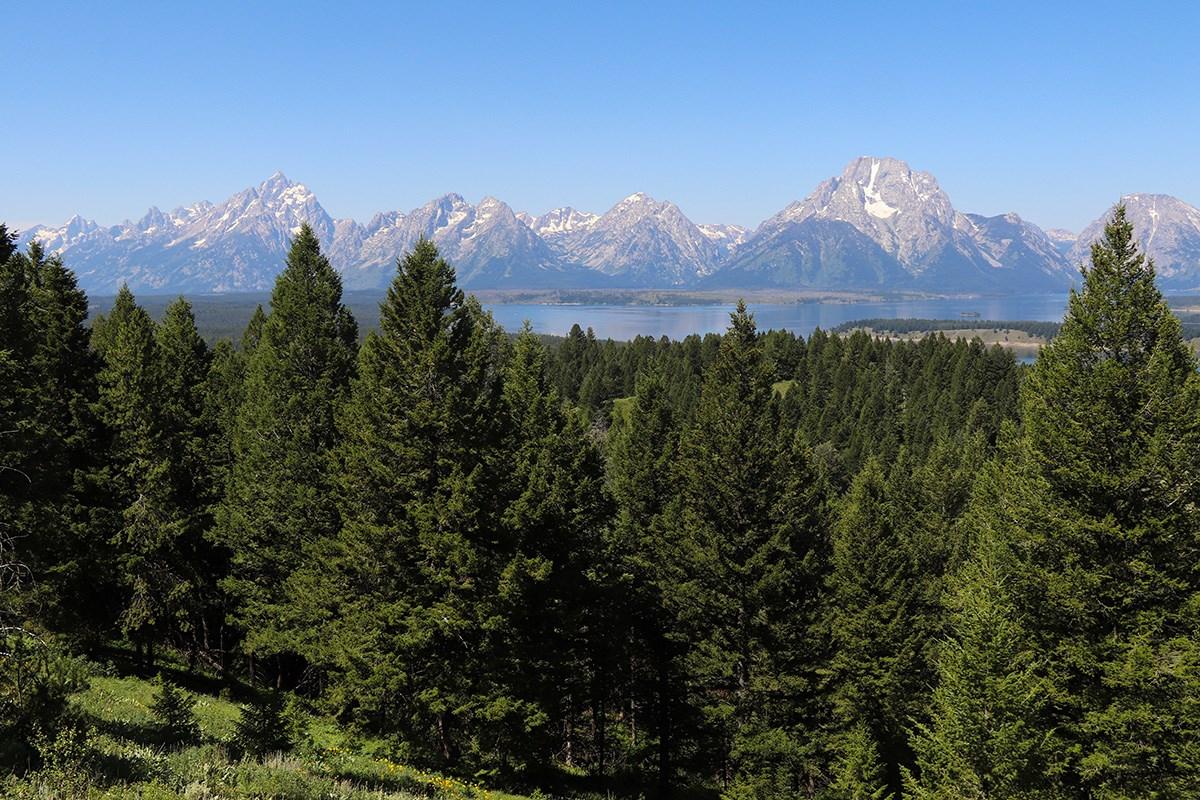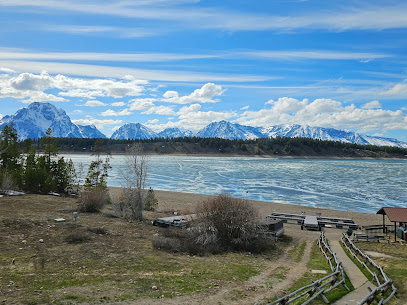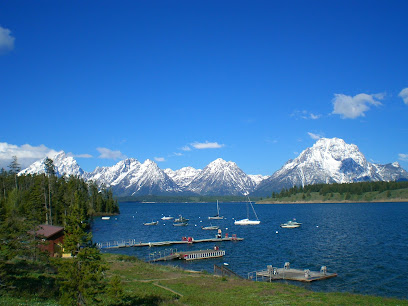
Nature's Majesty: Grand Teton National Park
Discover the awe-inspiring beauty of Grand Teton National Park, a haven for hiking, wildlife watching, and exploring the rich cultural history of Wyoming's rugged landscape.
Grand Teton National Park in Wyoming is a place of breathtaking beauty, where rugged mountains meet serene lakes and vast meadows. The park is named after Grand Teton, the tallest mountain in the Teton Range, which rises dramatically from the valley floor. It's a paradise for outdoor enthusiasts, offering a wide range of activities such as hiking, climbing, and wildlife watching. The park is home to diverse wildlife, including moose, elk, and bears. Visitors often spot these majestic creatures while exploring the park's many trails. The Snake River winds its way through the park, providing opportunities for fishing and boating. The park's pristine lakes, such as Jenny Lake and Jackson Lake, are perfect for kayaking and canoeing. History buffs will appreciate the park's rich cultural history. The area has been home to Native American tribes for thousands of years, and their influence is still visible today. The park also features historic buildings and trails that tell the story of early settlers and explorers. Whether you're seeking adventure or tranquility, Grand Teton National Park offers an unforgettable experience.
Local tips in Grand Teton National Park
- Visit early in the morning or late in the evening to avoid crowds and see more wildlife.
- Bring layers of clothing as the weather can change rapidly, especially at higher elevations.
- Don't miss the scenic drive along Teton Park Road for stunning views of the mountains.
- Carry bear spray and know how to use it; bear encounters are possible in the park.
- Make reservations in advance for camping, as spots fill up quickly during peak season.
Nature's Majesty: Grand Teton National Park
Grand Teton National Park in Wyoming is a place of breathtaking beauty, where rugged mountains meet serene lakes and vast meadows. The park is named after Grand Teton, the tallest mountain in the Teton Range, which rises dramatically from the valley floor. It's a paradise for outdoor enthusiasts, offering a wide range of activities such as hiking, climbing, and wildlife watching. The park is home to diverse wildlife, including moose, elk, and bears. Visitors often spot these majestic creatures while exploring the park's many trails. The Snake River winds its way through the park, providing opportunities for fishing and boating. The park's pristine lakes, such as Jenny Lake and Jackson Lake, are perfect for kayaking and canoeing. History buffs will appreciate the park's rich cultural history. The area has been home to Native American tribes for thousands of years, and their influence is still visible today. The park also features historic buildings and trails that tell the story of early settlers and explorers. Whether you're seeking adventure or tranquility, Grand Teton National Park offers an unforgettable experience.
When is the best time to go to Grand Teton National Park?
Unmissable attractions to see
Old Faithful
Discover the breathtaking eruptions of Old Faithful in Yellowstone, a natural wonder showcasing the beauty of geothermal activity and stunning landscapes.
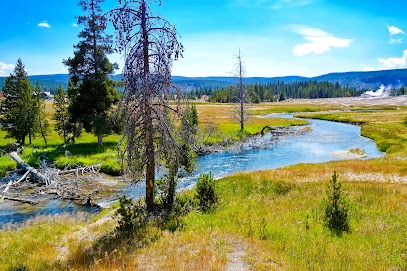
Gibbon Falls
Discover the stunning Gibbon Falls in Yellowstone National Park, a breathtaking cascade surrounded by vibrant ecosystems and scenic views.
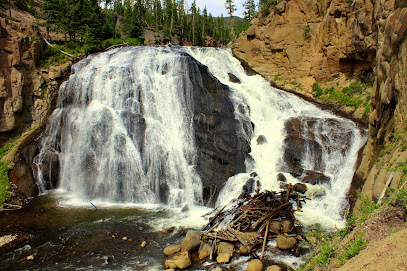
Jenny Lake Visitor Center
Discover the beauty and adventure of Grand Teton National Park at the Jenny Lake Visitor Center, your gateway to nature's wonders.

National Elk Refuge
Experience the beauty of nature at the National Elk Refuge in Jackson, Wyoming, a stunning wildlife sanctuary perfect for outdoor enthusiasts and photographers.
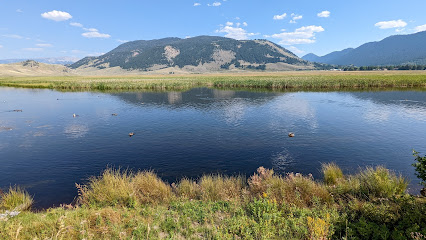
Grand Targhee Resort
Experience the breathtaking beauty and thrilling adventures at Grand Targhee Resort, the ultimate winter wonderland in Wyoming's Teton Range.
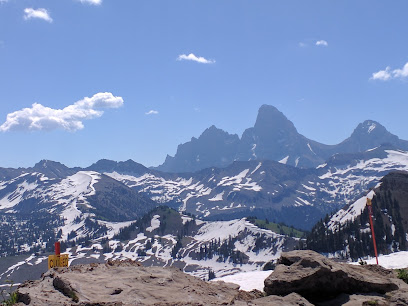
Jackson Lake Dam
Experience the breathtaking views and serene beauty of Jackson Lake Dam in Grand Teton National Park, a must-visit scenic spot for every traveler.
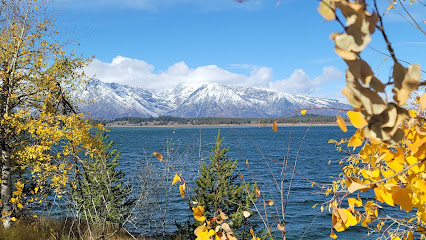
Colter Bay Visitor Center
Discover the wonders of Grand Teton National Park at Colter Bay Visitor Center, your gateway to breathtaking landscapes and enriching experiences.
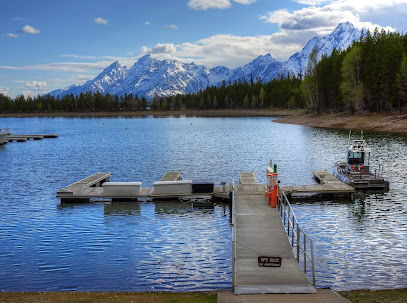
T.A. Moulton Barn
Explore the historic T.A. Moulton Barn in Grand Teton National Park, a breathtaking symbol of the American West amidst stunning landscapes.
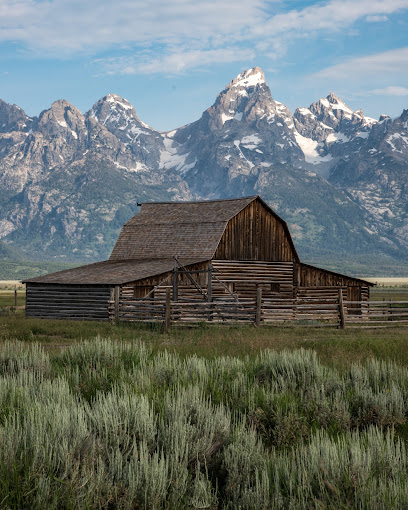
Taggart Lake Trailhead
Discover the breathtaking beauty of Taggart Lake Trailhead in Grand Teton National Park, a natural wonder for hikers and nature lovers alike.
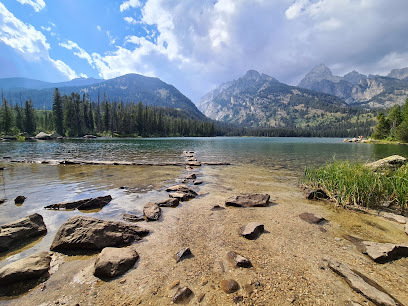
John D. Rockefeller, Jr., Memorial Parkway
Experience the stunning beauty and diverse wildlife at John D. Rockefeller, Jr. Memorial Parkway, the scenic link between Grand Teton and Yellowstone National Parks.
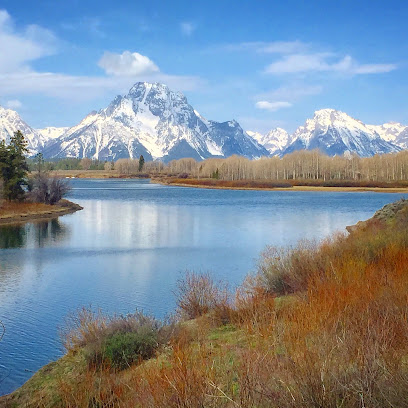
Jenny Lake
Explore the stunning landscapes and rich wildlife of Jenny Lake in Grand Teton National Park, a true gem for outdoor enthusiasts and nature lovers.
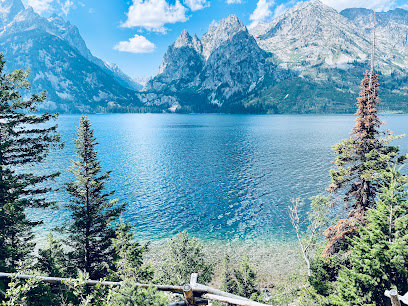
Signal Mountain Summit Road
Discover unmatched beauty and adventure at Signal Mountain Summit Road, where the Teton Range meets breathtaking vistas in Wyoming.
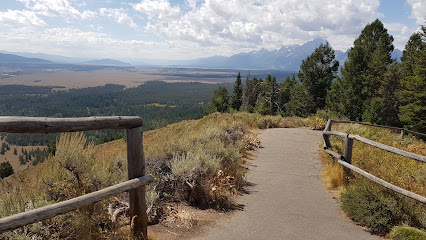
Chapel of the Transfiguration
Discover the tranquil beauty of the Chapel of the Transfiguration, a stunning Episcopal church nestled in Grand Teton National Park, Wyoming.

Elk Ranch Flats Turnout
Discover the breathtaking beauty of Elk Ranch Flats Turnout, a scenic spot in Wyoming perfect for wildlife watching and capturing stunning landscapes.
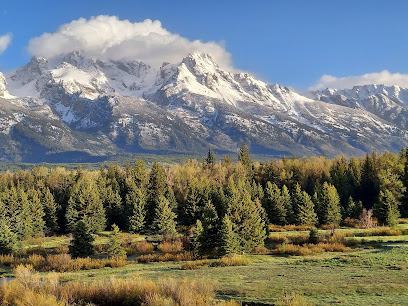
Jenny Lake Trailhead
Discover the breathtaking beauty of Jenny Lake Trailhead in Grand Teton National Park, a paradise for hikers and nature lovers seeking adventure.
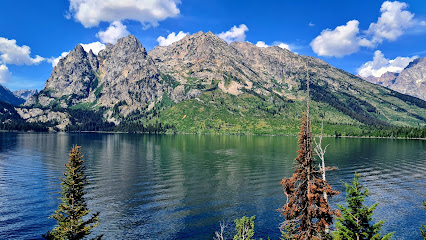
Essential places to dine
Markets, malls and hidden boutiques
Jenny Lake Overlook
Discover breathtaking views and serene landscapes at Jenny Lake Overlook in Grand Teton National Park, a true natural wonder.
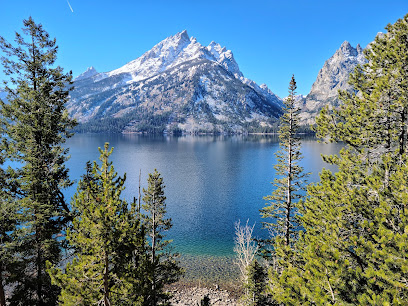
National Museum of Wildlife Art
Discover the National Museum of Wildlife Art in Jackson, Wyoming - a captivating fusion of wildlife, art, and breathtaking landscapes.

Grand Targhee Resort
Discover year-round adventure at Grand Targhee Resort, where skiing and mountain biking meet breathtaking Teton views.

Corbet's Cabin Top of the World Waffles
Experience the breathtaking vistas and delicious waffles at Corbet's Cabin, the sweetest spot in Teton Village.
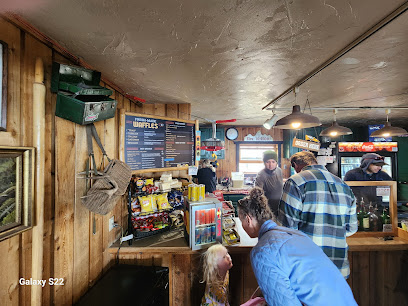
Heart Six Ranch
Experience the wild west at Heart Six Ranch, where outdoor adventures and rustic charm await in the heart of Wyoming's stunning wilderness.

JD High Country Outfitters
Discover adventure with top-quality gear at JD High Country Outfitters in Jackson, Wyoming - your gateway to the great outdoors.
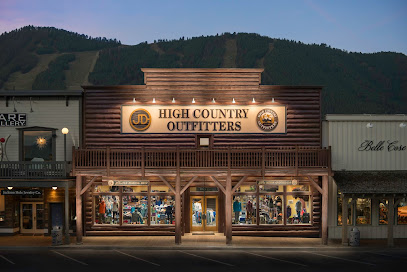
Teton Mountaineering
Explore Teton Mountaineering in Jackson for expert advice and gear for climbing, skiing, and all your outdoor adventures in the stunning Teton Range.
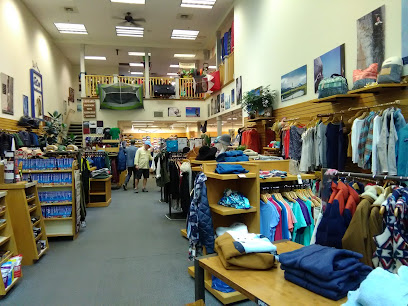
Old Faithful General Store
Explore the charm of Old Faithful General Store, a unique shopping experience in Yellowstone National Park, filled with gifts and essential supplies for every adventurer.
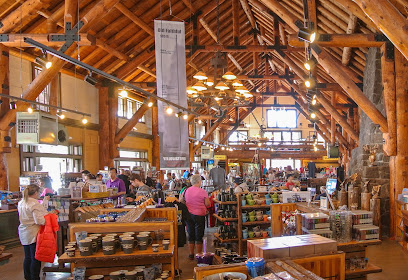
Belle Shops | Town Square
Discover unique gifts, home goods, and exquisite jewelry at Belle Shops in Jackson, Wyoming's charming Town Square.
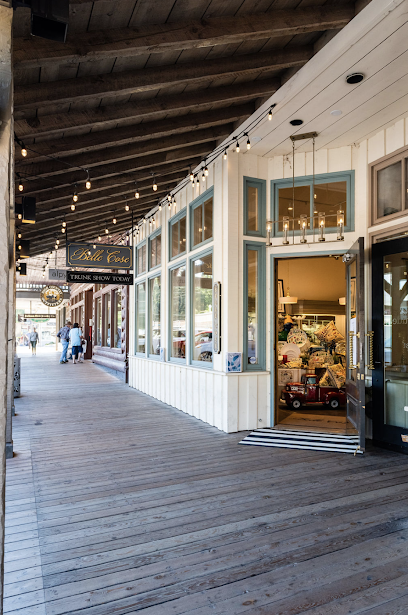
Yippy I-O Candy Co
Discover the sweetest gifts and treats at Yippy I-O Candy Co in Jackson, Wyoming, where every visit is a delightful experience for candy lovers.
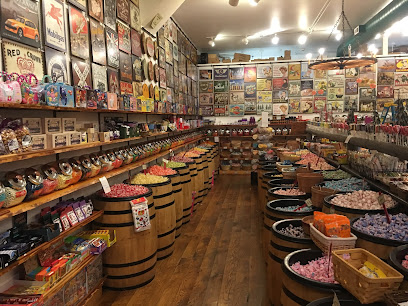
Lee's Tees
Explore unique T-shirt designs at Lee's Tees in Jackson, Wyoming, capturing the spirit of the region with every wear.
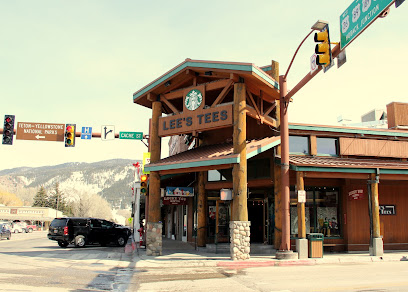
MADE
Explore MADE, a charming gift shop in Jackson Hole, where local artistry meets unique gifting in a delightful shopping experience.
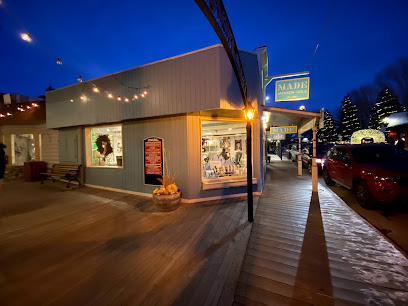
Signal Mountain Lodge General Store
Discover convenience and local charm at Signal Mountain Lodge General Store, your essential stop for groceries, gas, and adventure in Grand Teton National Park.
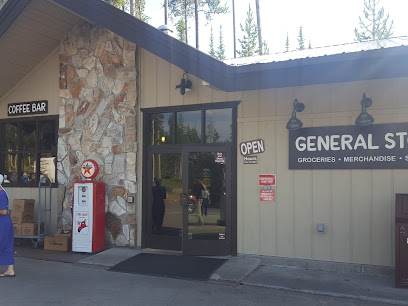
Teton Village Sports
Your ultimate destination for outdoor gear, rentals, and expert advice in Teton Village, Wyoming.
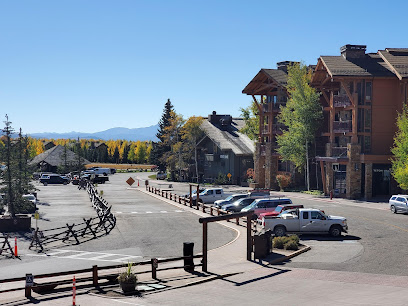
Jackson Mercantile
Experience the charm of Jackson Mercantile, a unique gift shop showcasing local treasures and handcrafted goods in the heart of Wyoming.
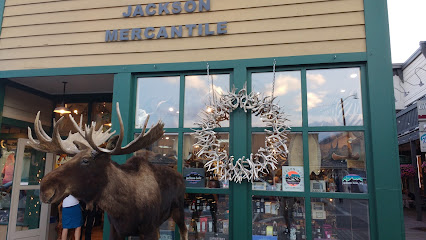
Essential bars & hidden hideouts
Million Dollar Cowboy Bar
Discover the legendary Million Dollar Cowboy Bar in Jackson, Wyoming - a vibrant hub for drinks, music, and the essence of cowboy culture.
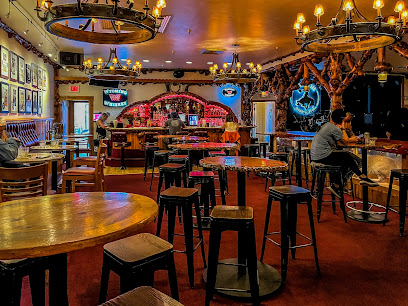
Mangy Moose Jackson Hole
Discover vibrant live music, delicious American cuisine, and a lively atmosphere at Mangy Moose Jackson Hole in Teton Village.
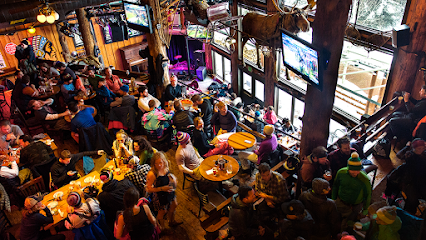
Silver Dollar Bar
Discover the Silver Dollar Bar in Jackson, WY - an iconic grill and live music venue offering American cuisine and a vibrant atmosphere.
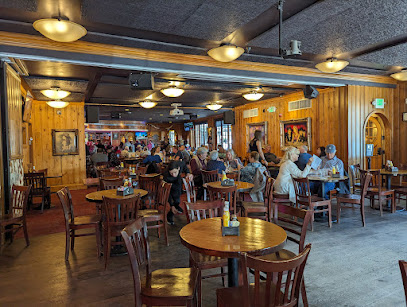
Dornan's Pizza Pasta Company
Experience mouthwatering pizza and pasta with breathtaking views of the Teton mountains at Dornan's Pizza Pasta Company in Moose, Wyoming.
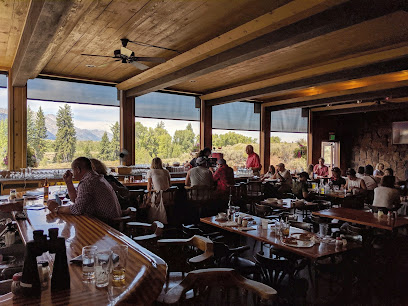
Cutty's Bar & Grill
Experience the heart of Jackson, Wyoming, at Cutty's Bar & Grill, where flavorful dishes and a welcoming atmosphere come together.
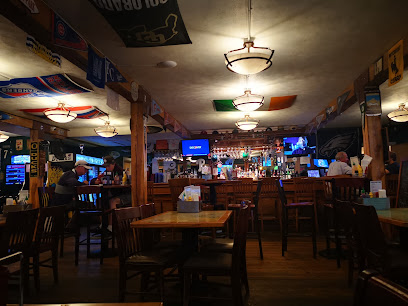
Bin22
Discover Bin22 in Jackson Hole, where exquisite tapas and an impressive wine selection create a unique dining experience for every palate.

Royal Wolf
Indulge in classic American cuisine at The Royal Wolf in Driggs, Idaho, where welcoming ambiance meets delicious flavors.
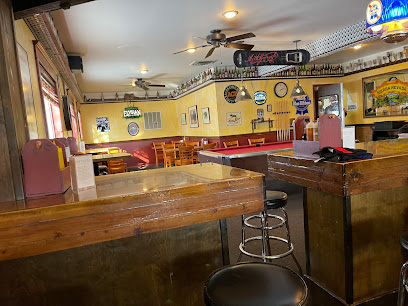
O'Rourkes Bar & Grille
Discover the vibrant local culture at O'Rourkes Bar & Grille in Driggs, Idaho, where delicious meals and a welcoming atmosphere await.
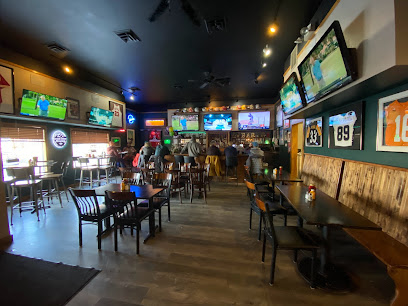
Leek's Marina & Pizzeria
Experience delicious pizza amidst the stunning backdrop of Grand Teton National Park at Leek's Marina & Pizzeria.
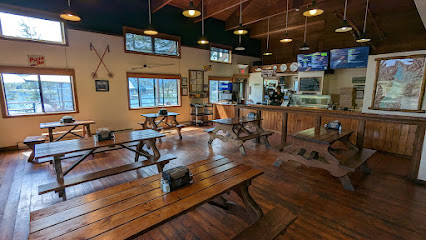
Spur Restaurant & Bar
Experience the essence of American cuisine at Spur Restaurant & Bar, where stunning views meet exceptional flavors in Teton Village.
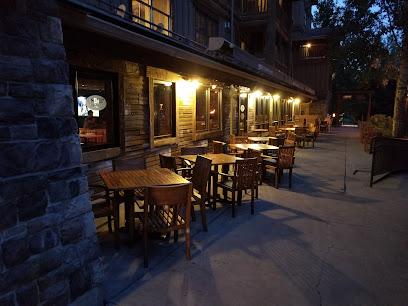
Trapper Grill
Discover Trapper Grill: a family-friendly dining gem in Grand Teton National Park, offering delicious meals and breathtaking mountain views.

Stagecoach Bar
Discover the vibrant atmosphere of Stagecoach Bar in Wilson, WY, offering delicious food, local brews, and live entertainment at the base of Teton Pass.
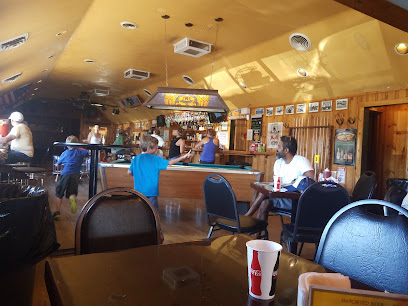
John Colter's Ranch House
Experience the authentic taste of Wyoming at John Colter's Ranch House, where barbecue meets breathtaking scenery in a cozy setting.
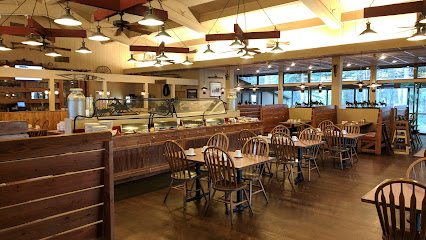
Dornan's Chuckwagon
Experience the charm of the Wild West at Dornan's Chuckwagon, where delicious American cuisine meets the stunning landscapes of Wyoming.
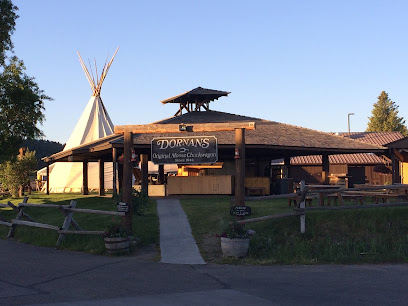
Pioneer Grill
Discover the iconic Pioneer Grill in Wyoming, where classic diner fare meets stunning views and warm hospitality in the heart of nature.
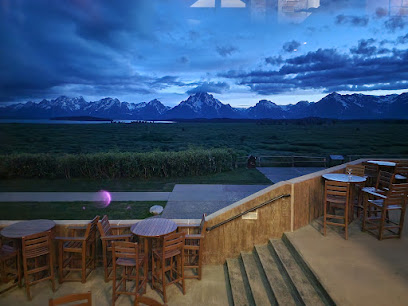
Local Phrases about Grand Teton National Park
-
- HelloHowdy
[haw-dee] - GoodbyeSee ya
[see yah] - YesYup
[yuhp] - NoNah
[nuh] - Please/You're welcomePlease/You're welcome
[pleez/yur wel-come] - Thank youThanks
[thanks] - Excuse me/SorryPardon me
[par-dun me] - How are you?Howdy partner?
[haw-dee par-tner] - Fine. And you?Fine. How 'bout you?
[fyne. how 'bout yuh] - Do you speak English?Ya speak English?
[yah speak ing-glish] - I don't understandI reckon I don't get it
[eye reck-un eye don't get it]
- HelloHowdy
-
- I'd like to see the menu, pleaseCan I take a gander at the menu, please
[kan eye take uh gan-der at the menu, please] - I don't eat meatI don't munch on meat
[eye don't munch on meet] - Cheers!Cheers!
[cheers] - I would like to pay, pleaseI reckon I'll settle up, please
[eye reck-un eye'll set-ul up, please]
- I'd like to see the menu, pleaseCan I take a gander at the menu, please
-
- Help!Help!
[help] - Go away!Git!
[git] - Call the Police!Call the Sheriff!
[call the shur-iff] - Call a doctor!Call the doc!
[call the doc] - I'm lostI'm turned around
[eye'm turned uh-round] - I'm illI'm feelin' poorly
[eye'm feel-in' poor-ly]
- Help!Help!
-
- I'd like to buy...I reckon I'll buy...
[eye reck-un eye'll buy...] - I'm just lookingI'm just browsin'
[eye'm just brow-zin] - How much is it?How much fer it?
[how much fur it] - That's too expensiveThat's a mite pricey
[thats uh mite prye-see] - Can you lower the price?Can ya knock it down a bit?
[can yuh nok it down uh bit]
- I'd like to buy...I reckon I'll buy...
-
- What time is it?What's the time o' day?
[whats the time uh day] - It's one o'clockIt's one
[its one] - Half past (10)Half past ten
[half past ten] - MorningMornin'
[morn-in] - AfternoonAfternoon
[after-noon] - EveningEvenin'
[even-in] - YesterdayYest'day
[yest-day] - TodayToday
[to-day] - TomorrowTomorrer
[tom-or-er] - 1One
[wun] - 2Two
[too] - 3Three
[three] - 4Four
[four] - 5Five
[five] - 6Six
[six] - 7Seven
[seven] - 8Eight
[eight] - 9Nine
[nine] - 10Ten
[ten]
- What time is it?What's the time o' day?
-
- Where's a/the...?Where's the...?
[wheres the] - What's the address?What's the address?
[whats the address] - Can you show me (on the map)?Can ya point it out (on the map)?
[can yuh point it out on the map] - When's the next (bus)?When's the next (bus)?
[whens the next bus] - A ticket (to ....)A ticket (to ....)
[uh ticket to]
- Where's a/the...?Where's the...?
History of Grand Teton National Park
-
The Teton Range, a part of the Rocky Mountains, began forming around 6 to 9 million years ago through a process known as fault-blocking. This geological activity caused one block of earth to lift, creating the jagged peaks that are among the youngest in the Rocky Mountain range. The dramatic uplift and the subsequent erosion have shaped the iconic skyline seen today.
-
The area that is now Grand Teton National Park has been inhabited by Native American tribes for thousands of years. The Shoshone, Bannock, Blackfoot, Crow, and Gros Ventre tribes hunted and gathered in these rich lands. Archaeological evidence indicates that these tribes used the area as a seasonal hunting ground, particularly for bison and other game.
-
In the early 19th century, European explorers and fur trappers began to enter the Teton region. Notable among them was John Colter, who was part of the Lewis and Clark Expedition. Colter is often credited with being the first European to lay eyes on the Teton Range in the winter of 1807-1808. His tales of the rugged mountains and geothermal wonders fueled further exploration and settlement.
-
During the early 19th century, the Teton area became a hotspot for the fur trade. The region was frequented by mountain men and fur trappers, including famous figures like Jim Bridger and Jedediah Smith. These trappers would often gather at the annual rendezvous to trade pelts, share news, and replenish supplies. The fur trade significantly impacted the local ecosystem, particularly the beaver population.
-
The Homestead Act of 1862 encouraged settlers to move westward, and the Teton area saw a wave of homesteaders in the late 19th and early 20th centuries. These early settlers established ranches, farms, and small communities. One notable ranch was the Bar BC Ranch, founded in 1912 by Struthers Burt and Dr. Horace Carncross, which became a social hub for the area.
-
Grand Teton National Park was established in 1929, initially protecting the Teton Range and several glacial lakes. In 1943, President Franklin D. Roosevelt created the Jackson Hole National Monument, adding more land to the protected area. This move was controversial and faced opposition from local ranchers and residents. In 1950, the monument and the park were combined, establishing the boundaries of Grand Teton National Park as we know them today.
-
Philanthropist John D. Rockefeller Jr. played a crucial role in the park's expansion. Between the 1920s and 1940s, he purchased over 35,000 acres of land around the Jackson Hole area through the Snake River Land Company. He later donated these lands to the federal government, significantly contributing to the park's current expanse and ensuring the preservation of its natural beauty.
-
In recent decades, Grand Teton National Park has been at the forefront of various conservation efforts. Initiatives have focused on preserving the park's diverse ecosystems, including its lakes, rivers, forests, and alpine environments. Efforts to protect wildlife habitats, such as those for the grizzly bear, elk, and bison, are ongoing. The park also collaborates with local communities and organizations to promote sustainable tourism and environmental education.
Grand Teton National Park Essentials
-
Grand Teton National Park is located in northwestern Wyoming, United States. The closest airport is Jackson Hole Airport (JAC), situated within the park itself, making it the most convenient option. Alternatively, you can fly into Salt Lake City International Airport (SLC) in Utah, which is about a 5-hour drive from the park. From Jackson Hole Airport, you can rent a car or take a shuttle service to your accommodation or directly into the park.
-
While within Grand Teton National Park, having a car is the most convenient way to get around. There are several car rental services available at Jackson Hole Airport. During peak seasons, shuttle services and guided tours are also available, providing an alternative to driving. Biking is another popular way to explore the park, with many accessible bike paths available. Note that public transportation options are limited within the park itself.
-
The official currency is the US Dollar (USD). Credit and debit cards are widely accepted in the park, including at visitor centers, lodges, and restaurants. It is advisable to carry some cash for smaller purchases or in case of card payment issues, especially in more remote areas of the park. ATMs are available at various locations, including Moose, Colter Bay Village, and Jackson Lake Lodge.
-
Grand Teton National Park is generally safe, but taking precautions is always advisable. Wildlife encounters are common, so maintain a safe distance from animals and follow park guidelines. Bear spray is highly recommended and can be rented or purchased locally. Petty crime is rare, but always lock your vehicle and secure your valuables. The town of Jackson, nearby, is also considered safe for tourists.
-
In case of emergency, dial 911 for immediate assistance. The park has several ranger stations where you can report emergencies or seek help. For medical emergencies, nearby medical facilities include St. John's Health in Jackson. It is advisable to have travel insurance that covers medical emergencies and evacuation if needed. Always carry a map, water, and a first-aid kit when hiking or exploring remote areas.
-
Fashion: Do wear comfortable, weather-appropriate clothing and sturdy hiking boots. Layers are recommended due to changing weather conditions. Avoid wearing strong perfumes that can attract wildlife. Religion: Respectful behavior is expected at all times, but there are no specific religious customs to follow. Public Transport: Limited within the park, so plan accordingly. Always follow posted rules and guidelines for shuttle services. Greetings: A friendly handshake or a nod is customary. Locals and park rangers are generally welcoming and helpful. Eating & Drinking: Pack out all trash and food waste, as leaving it can attract wildlife. Do try local cuisine in Jackson, including bison and elk dishes. Don't feed the wildlife under any circumstances.
-
To experience Grand Teton National Park like a local, consider visiting during the shoulder seasons (late spring or early fall) to avoid crowds. Early mornings or late afternoons are the best times for wildlife viewing. Local favorites include hiking the Cascade Canyon Trail and taking a scenic float trip down the Snake River. For a unique experience, visit the lesser-known Schwabacher Landing for stunning sunrise views of the Tetons.
Nearby Cities to Grand Teton National Park
-
Things To Do in Yellowstone National Park
-
Things To Do in Rexburg
-
Things To Do in Idaho Falls
-
Things To Do in Cody
-
Things To Do in Big Sky
-
Things To Do in Pocatello
-
Things To Do in Riverton
-
Things To Do in Bozeman
-
Things To Do in Logan
-
Things To Do in Rock Springs
-
Things To Do in Billings
-
Things To Do in Evanston
-
Things To Do in Butte
-
Things To Do in Sun Valley
-
Things To Do in Ketchum

